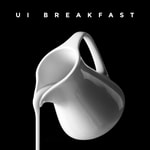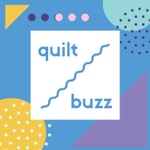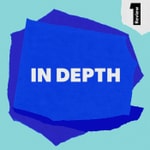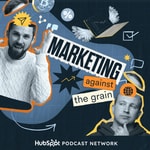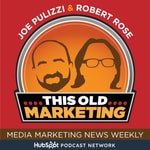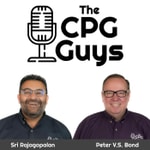XChateau Wine Podcast – Details, episodes & analysis
Podcast details
Technical and general information from the podcast's RSS feed.
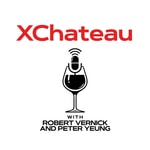
XChateau Wine Podcast
Robert Vernick, Peter Yeung
Frequency: 1 episode/10d. Total Eps: 195

Hosted on Acast. See acast.com/privacy for more information.
Recent rankings
Latest chart positions across Apple Podcasts and Spotify rankings.
Apple Podcasts
🇨🇦 Canada - food
08/07/2025#99🇨🇦 Canada - food
07/07/2025#78🇨🇦 Canada - food
06/07/2025#55🇬🇧 Great Britain - food
02/07/2025#99🇬🇧 Great Britain - food
06/06/2025#91🇬🇧 Great Britain - food
05/06/2025#58🇬🇧 Great Britain - food
25/05/2025#90🇬🇧 Great Britain - food
24/05/2025#60🇬🇧 Great Britain - food
21/05/2025#89🇬🇧 Great Britain - food
20/05/2025#52
Spotify
No recent rankings available
Shared links between episodes and podcasts
Links found in episode descriptions and other podcasts that share them.
See all- https://www.tiktok.com/
6801 shares
- https://zoom.us/
664 shares
- https://www.shopify.com/
435 shares
RSS feed quality and score
Technical evaluation of the podcast's RSS feed quality and structure.
See allScore global : 63%
Publication history
Monthly episode publishing history over the past years.
Evolution, not Revolution w/ Giampiero Bertolini, Biondi Santi
Episode 176
lundi 9 septembre 2024 • Duration 29:30
Taking over an iconic estate can be both exciting and terrifying. When EPI purchased the iconic Brunello di Montalcino producer Biondi Santi in 2017, they asked Giampiero Bertolini to take over as CEO. Giampiero was excited to join the “Champions League” of wine but also had to convince the local community that this outside investment would be good. He delves into how Biondi Santi has been pushing toward creating more value for the brand while maintaining its core essence.
Detailed Show Notes:
Biondi Santi’s history
- Family invented Brunello di Montalcino
- Founded in 1888 - Ferruccio Biondi Santi had a vision of quality wine with longevity during a time when people focused on quantity with wine as part of the diet
- Bottled in Bordeaux-shaped glass (a sign of quality) vs. standard Tuscan fiasco
- Tancredi Biondi Santi - one of the top consulting winemakers of the time, was asked to write appellation rules in 1967
- Franco Biondi Santi (“the doctor”) - selected the BBS11 clone in the ‘70s and organized a 100-year vertical tasting (1888-1988) in 1994 with important wine writers that boosted the image of Brunello. One writer gave the 1891 vintage 100 points
La Storica (wine library) - has all vintages since 1888, releases one old Riserva with a current Riserva each year
Path to Iconic Status
- The vision of the family - be good winemakers, high-quality
- In the global market regularly → elevated the Biondi Santi to a different level
- The wine offered to Queen Elizabeth II in 1967 was a favorite of Frank Sinatra’s
EPI acquired Biondi Santi in 2017 and installed Giampiero as CEO; the community was skeptical of French owners for an iconic estate had to convince neighbors by being transparent about what they were doing at the estate
- Before the takeover, prior 20 years, the business was not run well
- Rebuilt global distribution, did not have US distribution
- Re-connected with trade, critics, and consumers/collectors
What they kept the same
- Reinforced market position
- Style of the wines
- What they changed
- New vineyard philosophy (regenerative), replanted vineyards to improve quality, conducted soil studies
- Increased communications and more selective to the right people and thproperht channels
- Managed pricing to reposition the brand to increase demand
Keeping the brand fresh
- want s to be closer to the trade and consumer, spend more time in the market
- Storytelling of what is happening at the estate, not just the history, but today’s actions that protect the future
- La Voce di Biondi Santi - started 3 years ago, selects one word each year that is part of their philosophy (this year is “respect”); creates novel/audiobook based on a keyword (e.g., Joanne Harris, author of Chocolat) and podcasts with winemaker and Giampiero around the keyword
The most effective initiative so far - repositioning the brand by increasing price → gave higher credibility and put the brand up another step, old vintages increasing in price on the secondary market, high demand on Liv-ex (one of few growing while price increasing), one of the top 35 wines in the world on Liv-ex
Growth for Biondi Santi = value growth; volume is complex to grow
Value-driven by increasing distribution globally to rarify the brand further, not just taking price, but increasing value, which is a consequence of many conditions, and not rushing value creation in the market
Biondi Santi is now in 2.0 after 1st five years, and the next step is to increase the quality of its presence in the world and be closer to partners and consumers
Hosted on Acast. See acast.com/privacy for more information.
Wine Business, The Italian Way w/ Stevie Kim, Vinitaly
Episode 175
mercredi 28 août 2024 • Duration 41:42
In part 2 with Stevie Kim, Managing Director of Vinitaly, she explains how parent company Veronafiere invested in the various Vinitaly products and allowed her to experiment. Stevie also dives into her prolific content strategy, including the Italian Wine Podcast, which has over 2M downloads to date and where she sees value in marketing.
Detailed Show Notes:
Italian Wine Podcast
- Initially created to develop content for VIA candidates
- Something different every day - up to 9 episodes published / week
- Example shows: Ambassador’s Corner - Italian Wine Ambassadors go deep with their favorite Italian producer; US Market Focus - different perspectives on the US wine market
- Now ~2,000 episodes, they had to switch podcast distributors to Megaphone (Spotify) as most only host up to 500 episodes
- Audience - early on, was ~80% US & English speaking countries (the podcast is in English), and VIA students
- ~6M total downloads with a broader audience than Vinitaly attendees
Funding the Vinitaly complex
- Significant investment by Veronafiere, which is majority-owned by the city of Verona
- Italian Trade Agency subsidizes some events - e.g., pays for transport for judges for 5 Star Wines
- Some ticket sales and sponsorship revenue
- Podcasts funded by Stevie personally
Veronafiere saw value in investing in Vinitaly products
- Wanted to become more international
- Allowed Stevie to experiment with new products and invest in them
Stevie’s team has a large staff of content producers (video, social media)
- Document everything they do
- Create tons of content, of which only ~50% is used
- Stevie believes in being prolific - promotes discovery
Marketing products
- Never advertise on LinkedIn - it is too expensive
- Instagram - sometimes does advertising, conversion doesn’t happen on IG, try to drive to the website to convert, more for attention vs. conversion
- Facebook - most wine producers on FB, more effective and efficient, can get ~$100k subscription revenue from ~$5k ad spend
- Less concerned with “vanity” metrics like views and engagement, more interested in conversions
Looking forward - wants to bring more people to Italy and Vinitaly - it is the best way to convert people to Italian wine
Hosted on Acast. See acast.com/privacy for more information.
The Right Place at the Right Time w/ Devon Magee, Offshore Wines
Episode 166
mardi 16 avril 2024 • Duration 54:03
Having gotten bitten by the wine bug young and with deep wine retail experience, Devon Magee, founder of Offshore Wines, decided to start a small wine importer. Inspired by Kermit Lynch, Offshore focuses on small, artisanal brands making high quality, yet affordable wines. Devon shares how he bootstrapped the company and is finding his way as an importer.
Detailed Show Notes:
Background - mostly wine retail, did harvests in France (Vieux Telegraph, Chandon de Brialles in Burgundy - 2012-2014)
- Inspired by Kermit Lynch, he was interested in writing
Offshore Wines Portfolio
- Christian Knott of Chandon de Brialles started a new project, Domaine Dandelion, and asked him to import them
- 2017 - 1st shipment - 4 cases of Domaine Dandelion, 20 cases of Champagne Charles Dufour
- 15-20 producers now
- Goal: find high-quality wines made in an artisanal way from lesser appellations that are “affordable”
- “Affordable” = $30-100 in US retail
Starting an import business
- He did it on his own, with no lawyers
- ~2 months to get a license, ~$1-2k in fees
- Need a licensed warehouse to receive wines (uses CA Wine Transport)
- Self-financed 1st shipment
Cash flow is challenging
- 2-3 months for wines to land in warehouse (from France)
- Restaurants/retailers get 30 days terms
- Payment to wineries varies - most ~60-day terms from shipment, while others want payment upon shipment or 50/50 terms (upfront and on delivery)
Lifestyle is fun, traveling and visiting rural areas
Choosing winery partners - a lot is timing, being at the right place, getting to know communities, and very relationship-based; most wineries are referrals from existing relationships
Offshore differentiation - speaks the winemaker’s language (French, Spanish), worked production, and is building deep personal relationships
- Wineries are exclusive to CA, and only market Offshore works, though they sell to a small distributor in CO
- Focus on small producers precludes needing to be in all 50 states
- Optimal portfolio size ~25 wineries to be able to respond and represent wineries well
- Gets wine out for people to taste them, prefers personal connections over social media
- Shares other aspects of what people are doing (e.g., got and gave away bags of coffee from a producer experimenting w/ carbonic coffee bean ferments, giving away sweatshirts from Domaine Hausherr with an artistic word game on the back)
Devon is the only salesperson now, and he would ideally like 1-2 salespeople
- Other salespeople have opened doors for him to help him
Building small brands
- Many people struggle with name pronunciation
- He tries to share wines, stories, and pictures of brands
- He doesn’t agree with the need for scores and tasting notes; he uses email to share stories, wants to publish a newsletter eventually
- The new style of wine writing can help small brands - e.g., Alice Feiring, Ray Isle’s new book
Advice for others - be able to sell the wines
Hosted on Acast. See acast.com/privacy for more information.
Productivity and Community with Eric LeVine, CellarTracker
Episode 76
mercredi 10 novembre 2021 • Duration 43:27
Building the app while on sabbatical from Microsoft in 2003, Eric LeVine, CEO and founder of CellarTracker, had been close to a one-person show until recently. Yet, he’s built one of the most useful productivity tools for wine collectors, an engaged community of geeky wine lovers, and a respectable business that he’s now investing in to grow and take to new heights for the benefit of the CellarTracker community. Eric’s openness and candor provide an in-depth look at how one of the leading wine platforms was founded, built, and where it’s going next.
Detailed Show Notes:
- Eric’s background
- “Tech geek” to “wine geek”
- He was at Microsoft from 1992 - 2005; his last project was the “send error report” feature
- 1999 - took a biking trip to Tuscany and fell in love with wine and started collecting
- Built a tool to keep track of his cellar, then let a few friends use it, which morphed a personal spreadsheet into a relational database
- Eric created CellarTracker while on sabbatical from Microsoft in 2003, then in April 2004, launched it publicly and left Microsoft a few months later
- CellarTracker overview
- Core element - a productivity tool to catalog and manage every aspect of the wine experience (e.g., purchasing, tracking, consuming)
- Byproduct - “Yelp for wine” - the aggregated wisdom of the community from tasting notes, drinking windows
- User base
- 10M unique people visit the site
- ~750k registered users
- ~300k active users
- Wine database
- 4M wines created
- 135M bottles in cellars
- 9.1M tasting notes in the community + 1.3M professional tasting notes
- Features and functions
- Optical recognition of labels - partners with Vivino
- Most used features - tasting notes (~10M visitors/year on the website, most people reading or researching the tasting notes; ~9.1M tasting notes growing ~750k / year / ~2k / day)
- Features collectors use - what wines do they have, when do they want to drink them, what are wines worth (the main premium feature)
- Wine valuations - partner with Wine Market Journal for appraisals, overlaid with what people are paying for the wines in CellarTracker
- Drinking windows - updated by users, partnership with review publications to overlay their data for subscribers of their content
- Surprise & Delight feature - the ability to print a restaurant-style wine list
- Geekiest feature - can print unique barcodes for your bottles and use a scanner to check them in and out
- Default mode - creates a unique barcode for each specific bottle
- For restaurants - uses same code for each wine of a particular size
- Conducted research into the wine collector space
- ~18M people in the US store wine at home / in a wine fridge
- ~10% awareness of CellarTracker in the US
- ~5-10% awareness of CellarTracker globally
- Data analytics
- They just hired the 1st data scientist several weeks ago (as of Oct 2021)
- They haven’t done a lot to date
- User ratings - can track/follow specific authors, most often used for older wines at auction as one of the only sources of data for older wines
- Richard Bazinet authored research in 2016 of an analysis of community ratings vs. professional publications
- Never specifically built tools to enhance “influencers” in the system, was anti “gamification” elements to incentivize people to write tasting notes
- Data accuracy - has a team of 4 (some PT/ some FT) to curate the wine database and look for duplicates, use both automation and humans to have duplicate detection
- Business model
- “Voluntary Payment” - one of the early “Freemium” business models
- Established this because the value of CellarTracker is in the active community, and the data it creates makes the platform more robust and valuable
- Suggested payment based on the size of collection - avg ~$57/year
- $40/year for <500 bottles
- $80/year for 500-999 bottles
- $160/year for 1,000+ bottles
- The lowest payment is $20, and some pay thousands
- The majority of revenue comes from this
- Some ads, but not in the app
- Affiliate links with Wine-Searcher - the #2 referral source after Google
- “Voluntary Payment” - one of the early “Freemium” business models
- Key differentiators of CellarTracker
- Cellar management - hardcore focus on scalable needs of collectors
- Good engagement - attracted a set of people who keep coming back
- Community - an “authoritative” audience - more geeky people that are in the community
- Focus on privacy, needs of the community, up-time, neutrality (not affiliated with retailers or other businesses)
- The next horizon for CellarTracker
- Building a team - was only 3 people at the start of 2021, the goal is to be 11 by year-end (data scientists, engineers, UI designer)
- Upgrade & deepen the existing experience, especially mobile app - they have seen a significant shift to mobile over the last 10 years,
- More recommendations and automation of different scenarios
- Connection to industry/wineries/other parts of the wine ecosystem (no natural interfaces today)
- Better understand and engage with the 10M people who visit the CellarTracker website - many of whom use it as a research platform
- Brought on a group of angel investors to reinvest cash flow into the business
Hosted on Acast. See acast.com/privacy for more information.
Fine Wine End-to-End w/ Don St. Pierre and Adam Lapierre MW
Episode 75
mercredi 3 novembre 2021 • Duration 40:06
As the only fine wine end-to-end solution in the US, Vinfolio has recently launched its wine investment service, leveraging its deep expertise in the fine wine arena. Don St. Pierre, Executive Chairman, and Adam Lapierre MW, President, tell us about Vinfolio's history, how the marketplace, storage solution, and VinCellar work together, as well as get into their recent foray into wine investment. A must-listen for those intrigued with wine investment and for fine wine lovers in general.
Detailed Show Notes:
- Don St. Pierre's background
- 1996 - founded ASC Fine Wines w/ his father, a wine importer in China
- 2010 - sold ASC to Suntory, stayed with the company until 2014
- 2015 - got connected with Vinfolio and bought 33% of business with a friend
- Adam Lapierre's background
- Mainly on the supply side (worked at a winery in the Finger Lakes, at an importer)
- Became an MW in 2013 and moved to the buying side, working for Lidl, a major retailer of wine
- Joined Vinfolio in 2018, became President in 2020
- Vinfolio's history
- Started by Steve Backman, a software entrepreneur, and wine collector, in 2004 - he wanted to create a cellar management tool and marketplace to store and sell wine
- Built VinCellar - cellar management tool, started at a similar time to Cellar Tracker (Eric Levine), the difference is Steve wanted a more end-to-end solution for collectors vs. a more utility tool for Cellar Tracker
- Built VinFolio - marketplace and warehouse storage business
- 2009 - Vinfolio went bankrupt in Global Financial Crisis, clients came in and took over the business
- Vinfolio is an end-to-end solution for wine collectors - buying, storing, and selling wine, focusing on the niche of fine wine coupled with technology
- Similar business model to some UK businesses (e.g., Berry Bros & Rudd, Farr Vintners)
- Most people hear about Vinfolio through retail/e-commerce today, but that may shift as VinCellar is re-built and re-launched
- Vinfolio Marketplace
- A fixed price auction model
- Uses proprietary tools that determine recommended market price for collectors to sell at
- Storage clients use VinCellar to put wines for sale, or others can use the full-service option w/ the cellar acquisition team (every bottle on the marketplace has been inspected with it being rare for wines to be sent back)
- Wine sourcing
- Collector Marketplace (⅓ of wine sales) - from individual collectors
- Producer Marketplace (⅔ of wine sales) - from a global network of merchants (e.g., negociants), direct from producers, and US importers/distributors (~15-20% of sourcing)
- Try to clearly differentiate between the sourcing types
- Advantages of the Vinfolio marketplace
- For Buyers - the breadth of wine at their fingertips, more clarity around the asking price vs. other auctions
- For Sellers - realized prices often higher than live auctions (except for very rare wines)
- Wine Storage
- A vital part of the business is to create ready supply for the marketplace
- It makes VinCellar an essential part of the business
- Convenience for clients to get delivery
- A premium service
- Pricing ~$5/case/month
- Inventory is cataloged and received at the bottle level
- Clients can take delivery or sell wines at the bottle level
- Wine Investment Service
- It started because Vinfolio got unsolicited inquiries around wine as an asset class for investment
- Retail marketplace helps Vinfolio understand where market demand is
- Investment customers are mainly new customers vs. traditional clients that are more passionate wine collectors
- Vinfolio investment process
- Min investment size = $25,000 - in order to have a diversified portfolio
- Purchase in original wood cases (OWC) mostly
- Understand client's interests
- Focus mainly on blue-chip / investment grade wines, the foundation of every portfolio is Bordeaux
- "Stock picking" - look at buying opportunities and allocate portfolio across current and mature vintages
- Put wines in storage - mainly in the UK under bond (as it's easier to sell)
- Key benefits of Vinfolio wine investment
- Buying side - acquire below market (charge landed cost (which includes shipping from the UK) + 6% commission, which is usually 10-20% below US retailer pricing)
- Selling side - uses fixed auction model, 12% commission for the sale (lower than standard commission rates)
- Storage fees consistent with w/ Vinfolio storage fees
- Investors get access to special wines, similar to private clients
- Vinfolio has an informal list of producers with high demand, leveraging experience of the day to day business
- Uses Vin-dex - Vinfolio proprietary pricing algorithm - provides a daily market price for wines
- Has 10 years of historical auction data
- Wine-Searcher pricing - takes in ~5,000 web calls/day
- Historic Vinfolio sale prices
- Also a member of Liv-ex
- The investment service launched a couple of months ago (as of Oct 2021) - ~$0.75M assets under management vs. ~$250M total under in Vinfolio storage
- Investment differentiators
- Transparency of process, particularly rationale for wine selections
- Investment strategy - diversification with multiple cases of wine
- Experience in the fine wine market
- Big initiatives for Vinfolio
- VinCellar overhaul - orienting data around investment as well
- E-commerce platform re-launch - transitioning to a new platform with more refined, personalized user experiences
- Hiring more quality people to service clients
- Carrying more inventory to have more wine available
Hosted on Acast. See acast.com/privacy for more information.
Balancing the Head and Heart of Wine Investing w/ Tom Gearing, Cult Wines
Episode 74
mercredi 27 octobre 2021 • Duration 59:18
As the wine investment business leader with $275M of assets under management, Cult Wines has been a pioneer in the space for over a decade. Born out of a passion for wine, Tom Gearing, CEO and founder of Cult Wines, tries to balance the head and heart elements of investing in wine with actively managed portfolios by CFAs and experiences with some of the top wineries of the world. Tom shares all the details and great examples of why people should consider investing in wine, the Cult Wine investment process, and where Cult Wines is heading.
Detailed Show Notes:
- Tom’s background
- founded Cult Wines w/ his brother in university
- Father was an investment banker with a passion for wine, especially Burgundy
- Traveled a lot to Burgundy as a child
- Started an import company - Burgundy Cellar
- The early 2000s - started Financial Wines - an online price transparency tool, but ran out of funding after the dot com crash
- 2007-2008 - during Financial Crisis - people looking for alternative investments - Tom realized wine was a safe haven and should be more investable
- Based in the UK
- Where the Wine trading is very well established
- The UK has tax free status for wine trading for anyone in the world - can keep wine in a tax free warehouse where you don’t pay taxes (sales tax, VAT) upfront
- Asian collectors used London to build collections before shipping it
- Brexit impact - mostly operational (shipping is a lot slower) vs. tax,
- Why invest in wine?
- Those with a passion for wine - Build a fine wine collection, can drink it, or sell it in the future
- Those not passionate about wine - wine prices are more consistent and tend to go up in value because the supply goes down over time (people drink it), tends to be insensitive to financial market fluctuations (went up in value in 2009) - suitable for diversification
- Vs. art/cars/other alternative investments, wine is more attractive:
- Accessibility - lower barriers to entry - hundreds or thousands of dollars for wine vs. millions for fine art/cars
- Liquidity - better than other alternative assets
- Price transparency - more trading publicly and more visibility (though, still not as good as it could be)
- Wine investment serves as a storage/aging function for the fine wine market with pristine provenance and authenticity
- Cult Wines Overview
- Not a retailer - acquires wines on behalf of clients
- Three warehouses - London, Paris, Bordeaux
- EU changed storage laws in 2016 to hold wines without paying VAT (similar to the UK)
- Have own warehouse and staff to ensure provenance and authenticity of wines (e.g., caught heat damage on a shipment of Scarecrow wine and made a claim with freight forwarder immediately)
- Has own photography studio and processes 250 cases/day, and photos are immediately uploaded for inspection
- Investment process
- Has a managed portfolio service (min $10k investment)
- Gather client objectives - risk profile, investment duration (3-5 years, 5-10 years, 10+ years), how wine fits into their entire portfolio
- Build a personalized, customized portfolio
- Store wine in physical warehouses (clients own bottles or cases, the physical asset b/c it’s hard to have liquidity for funds where people have fractional ownership of a fund)
- Get access to investment platform
- Top-down investment process - actively managed portfolios
- Cult Wines has a Chief Investment Officer (CIO), and all portfolio managers are Chartered Financial Analysts (CFA)
- Constantly reviewing the market and making asset allocation decisions
- E.g., Trump Tariffs on European wine - team thought Bordeaux would go down in price, proposed reducing allocations from 40% -> 30% and re-allocate to Italy, which looked undervalued already and had no tariffs; in 6 months, AUM of Bordeaux went from 40%->36% and Italy 6%->13% and Bordeaux prices went down 2-3% and Italy up 12%
- Assets Under Management (AUM) - $275M
- UK/Europe is the biggest
- Asia next
- Americas (smallest, but newest)
- Fees
- Annual management fee - starts at 2.95%/year (with $10k investment), 2.75% (with $35k investment), 2.5% ($150k investment), 2.25% ($500k investment)
- Benefits - portfolio allocation, customization of the portfolio, investment platform access, customer support, storage & insurance, trading on the platform (no feeds on trading to align Cult Wines interests with clients)
- Higher tiers get more experiential benefits - access to producers, client-only events, educational activities, vineyard visits
- Wine Buying
- 35% direct from winery/new vintages
- 65% secondary market - from existing investors, trusted suppliers/brokers, and trading platforms (e.g., Liv-Ex)
- Wine Selling / Delivery
- ~20% of wines have been delivered to people, can ship to 45 states, clients pay delivery fees
- Some clients use Cult wines as a global cellar - e.g., a Japanese collector sent wines to the US when he was going to be there to visit
- Wine sales channels
- Cult Wines buys for other clients - for wines they believe will appreciate more
- Trade team - sells to other wine merchants, brokers, traders, importers
- Retail/Direct to Consumer - listed on Wine-Searcher and Cult Wines website for sale
- Team - ~100 people total
- Infrastructure based in UK (including ~24 tech and product folks)
- Regional offices - relationship managers, portfolio manager (all CFA level; Hong Kong, Singapore, 2 in London, New York)
- 8 in North America (3 in Canada, 5 in New York)
- Company’s Growth
- 1st 5 years - establishing proof of concept
- 2nd 5 years:
- 2014 - acquired competitor, Premier Cru Fine Wine Investments, doubled AUM and business
- 2016 - opened Hong Kong office
- 2018 - opened Singapore office
- 2014-2019 - $7 -> $50Mm in AUM
- Next 5-year phase (18 months in) - “reborn, evolution”
- Fine wine investment is limited by market inefficiencies: accessibility, liquidity, price transparency
- Focused on projects that will improve inefficiencies and that will naturally make the wine investment space grow
- Types of wine for investment
- Opportunistic trading - capturing inefficiencies in pricing - there may be opportunities to buy in one region and sell in another at a profit
- Benchmark wines - based on scores (with critics weighted differently by the impact), vintages, the value of an established baseline of wines (e.g., Bordeaux, Burgundy)
- Finding new opportunities - wines with high quality that have a good chance of increasing in value, e.g., Pierre Gonon St Joseph - was 30-40 euros 3-4 years ago, now $150/bottle
- Auction houses - don’t work with them much
- Hard to get certainty of provenance
- A lot more mature/older wines which have already gone up a lot in value
- Costs are prohibitive (10-20% on a transaction)
- But the best place to get the highest/best prices (e.g., 1945 DRC from the Drouhin cellar got ~$500k / bottle)
- Next for Cult Wines
- Launching new platform for managed investment service
- Bespoke, public blockchain for security, authenticity, and speed of secure transactions
- Continue to build North American offices (opened Spring 2021) in Canada and New York
Hosted on Acast. See acast.com/privacy for more information.
Making Wine Investing Accessible w/ Anthony Zhang, Vinovest
Episode 73
mercredi 20 octobre 2021 • Duration 37:03
A serial entrepreneur, Anthony Zhang, was pondering alternative investments and fell into wine. With superior returns to the S&P 500, less volatility, and low correlation with the stock market, wine investment seemed like a perfect category to democratize with technology. Anthony tells us why people should consider investing in wine, the Vinovest investment process, and how wine investment may impact the wine industry. All with a mission of lowering the cost and barriers for the average consumer to invest in wine.
Detailed Show Notes:
- Anthony’s background
- He grew up around the world, childhood in Beijing and Hong Kong
- Went to USC for college and founded EnvoyNow, a food delivery service for college campuses with investment from Mark Cuban and Peter Thiel
- Was considering alternative investments and was attracted to wine over others (e.g., art, cars)
- Wine investing challenges
- Hard to get access to the wines
- Fees for auctions, shipping, and storage
- Investment thesis - fine wine has outperformed the S&P 500 over the last 20 years, has half the volatility, and has a low correlation with the stock market (i.e., is a good hedge); wine also has a decreasing supply over time, which enables appreciation over time
- Vinovest investment process
- Choose how much to invest, how long to invest in (e.g., 5 vs. 20 years), and your risk appetite (e.g., blue-chip wines like 1st growths or Grand Cru Burgundy or “emerging markets” like newer winemakers, ownership changes, etc.…) => this helps determine which wines to invest in
- Invest in whole bottles or cases, not fractional bottles or fractions of a portfolio
- Acquire, store, and insure wines
- Vinovest can help sell wines as well
- Fees - all-inclusive 2.85% / year asset management fee
- Access/procurement of wines
- Shipping and wine storage
- Insurance
- Average bottle price ~$200-600/bottle
- Acquire wines below retail by buying direct from negociants or wineries
- Currently managing ~$50M (as of Sept 2021)
- Can take physical delivery of wines - but often stored in Europe, so can arrange for batch delivery with others to reduce shipping costs (from hundreds of dollars to <$100 for shipping)
- Valuing wine and liquidity
- Vinovest plugs into major wine exchanges (e.g., Liv-ex, Wine Owners, Cavex, Berry Bros, Bordeaux Index) to gather real-time sales data
- Selling wine - only invest in whole bottles and cases, so there are more places to sell to, including retailers and restaurants. Most deals are done offline
- Good liquidity for 5-15-year-old wines
- Need at least a 5 year time horizon to realize returns
- Investable wines
- Need scarcity (not available widely), track record of improving with age, and brand equity (a sought after, globally recognized brand)
- Regional mix - ~25-35% Bordeaux, #2 = Burgundy, #3 = Italy (Super Tuscans, Barolo), small amounts of select producers in California, Chile, Germany; vintage Champagne having a resurgence (e.g. - 1996, 2002 vintages)
- Algorithm for determining wines backtested back to the 1980s
- Fake/counterfeit wines
- Provenance/fraud are the most significant risk for newcomers => Vinovest’s insurance company inspects and authenticates the wines
- Vinovest only buys in-bond so can track the previous owners
- Key players in the wine investment space
- Mainly in Asia and Europe
- Private Banks have wine funds, UK (Vin-X, Wine-ex, Cult Wines)
- Vinovest differentiation - more technology-driven, collect more data and aggregate it to create automated investment strategies
- To address wine funds that fail - each investor owns their wines with an audit trail that shows the wine is theirs
- Wine investment impact on the wine industry
- Wine prices may increase as more players enter the investment market
- Climate change is increasing prices through lower yields
- It won’t impact commercial wines (e.g., $10-20 bottles), but fine wines
- Auction houses - the modern investor isn’t okay with paying 20-25% premiums
- Regulation
- US - wine is classified as a collectible, like art or rare coins, and is subject to capital gains tax when sold (self-reported)
- Int’l - some countries, like the UK, France, and parts of Asia, wine is classified as a “wasting asset” with an expiration date (often 50 years) and is capital gains tax-free
- Next for Vinovest - want to continue to educate consumers on the benefits of wine investing, intends to create a low entry point to make wine investing more accessible
Hosted on Acast. See acast.com/privacy for more information.
Tackling Climate Change w/ Josep Maria Ribas & Julien Gervreau, IWCA
Episode 72
mercredi 13 octobre 2021 • Duration 45:44
With droughts, floods, hail, wildfires, and more challenging how wine is made, Familia Torres and Jackson Family Wines are leading the way to tackle climate change in the wine industry by founding the International Wineries for Climate Action. Founded in 2019, the group already has 22 members and continues to expand its reach and impact. Listen in as Josep Maria Ribas Portella, Climate Change Director for Familia Torres, and Julien Gervreau, VP Sustainability at Jackson Family Wines, tell us about the impacts of climate change, how to measure GHG in the wine industry, and ways wineries are working to improve their emissions. A mission-critical effort for the entire wine industry, listen in to learn more!
Detailed Show Notes:
- Josep’s & Familia Torres’ background
- Climate Change Director, an energy engineer, has been with Familia Torres for five years
- Torres - 150-year history, 5th generation running the company
- Climate change dept reports directly to Miguel Torres (CEO), who got passionate about the subject after watching An Inconvenient Truth with Al Gore
- Julien & Jackson Family Wines’ (“JFW”) background
- VP Sustainability at JFW
- JFW is a large, family-owned company, best known for Kendall Jackson and La Crema
- In the 2nd generation, the company is very passionate about climate change
- 2008 - Torres and JFW came together on climate change and the need to measure greenhouse gas (“GHG”) emissions
- International Wineries for Climate Action (IWCA)
- Founded by Torres and JFW in 2019
- ~2010 - Miguel Torres tried to start something similar in Spain, but it didn’t work out
- Deciding to partner w/ JFW and make it international led to the successful launch of the IWCA
- IWCA tries to standardize emissions measurement and communications
- The wine industry is not a significant contributor to climate change, but agriculture is an emerging area of opportunity, and wine can represent agriculture more broadly
- IWCA is 1st agriculture group to join the UN’s “Race to Zero” initiative
- Impact of climate change on the wine industry
- The impacts are being felt globally (Torres)
- Advanced ripening of grapes (leading to higher alcohols)
- More extreme weather - prolonged droughts in Spain, flooding, late hail, hydric stress (leading to worse wildfires), late-season heat spikes
- Measuring GHG emissions - Scope 1-3 definition
- Scope 1 - direct emissions - e.g., fuel burnt in winery vehicles, gas used in boilers, CO2 usage
- Scope 2 - indirect emissions from purchase of electricity
- Scope 3 - indirect emissions from purchased goods and services - e.g., packaging, logistics, waste disposal of bottles, etc.…
- Scope 1&2 are ~20-25% of GHG emissions, Scope 3 - 75-80%
- GHG impact of a bottle of wine
- Use World Resource Institute’s GHG Protocol and ISO14064 inventory management process
- For IWCA members (as of Oct 2021) - the average bottle of wine has a 1.61 CO2e/L of GHG emissions
- Range - 0.75 - ~10 => larger wineries tend to be lower, smaller wineries tend to be higher
- GHG reduction measures
- Shipping is ~15% of carbon footprint for Torres => using railroad when possible, ship in bulk (for every 1 bulk shipper sent, it replaces 4 containers, saving 3 shipments)
- Electricity - many wineries installing onsite renewable energy, primarily solar
- Harvest is 2.5 months/year but uses ~50% of electric consumption
- Packaging - ~25% of total GHG footprint
- Glass is ~20% of the total GHG footprint
- JFW - reduced the weight of bottles for KJ and La Crema - saved ~3-4% of total GHG emissions and saved money
- Reduce weight bottles have more recycled content in the glass, reduce emissions of glass making process (e.g., Furnace of the Future), bloggers starting to weigh bottles before tasting
- Torres - bottles down to 400g, can’t go much lower, or bottles will break on the bottling line or with consumers
- Potential future of re-utilizing bottles
- Regenerative farming - could potentially lead to carbon sequestration in the soil, science still in progress
- IWCA Mission & Purpose
- Decarbonize the wine industry as fast as possible
- 3 membership classes - Gold, Silver, Applicant (committed to joining)
- Requirements
- Commit to Net Zero by 2050 with intermediate reductions by 2030 (all)
- Submit baseline GHG emissions inventory, verified by 3rd party audit (all)
- Min 20% onsite renewable energy (Gold)
- Constant reductions year over year (Gold)
- Do not recognize purchase of external offsets in reductions
- Target membership
- Goal - 20 wineries by Nov 2021
- Oct 2021 - 22 wineries
- Miguel Torres long-term target - 100 wineries
- Fees - a sliding scale by volume
- Flat fee - €4,000 / year
- Variable fee - €0.01 / case produced / year, cap of 600,000 cases
- Max fee = €10,000 / year
- Measurement & verification paid by wineries themselves
- Released a GHG calculator to enable wineries to catalog emissions data on their own
- Smaller wineries join (there are members as small as a few thousand cases) to participate in something bigger and to amplify their voice
- Upcoming for the IWCA
- Oct 21st - 1st Member Report launch - includes all GHG inventories from all members, which will be made public
- The website will be overhauled
- Friends of IWCA category to be launched
- The initial stage of working groups launching
Hosted on Acast. See acast.com/privacy for more information.
Breaking Down the 3-Tier System w/ Tom Wark, National Association of Wine Retailers
Episode 71
mercredi 6 octobre 2021 • Duration 55:45
Instituted in a different time, post Prohibition, the 3-Tier system of alcohol distribution and sales in the US creates inefficiencies in matching inventory with demand. Tom Wark, Executive Director of the National Association of Wine Retailers (“NAWR”), founder of Wark Communications, and writer of Fermentation - the Daily Wine Blog educates us on the history, key issues, and challenges of navigating the 3-Tier system for wine consumers to get the wines they want. The NAWR is on a mission to modernize the regulatory landscape for alcohol and bring choice to consumers. Listen in to Tom’s decades of war stories on wine regulation!
Detailed Show Notes:
- Tom’s background
- He grew up in Northern California and got interested in wine at an early age
- He got a Masters in History
- Worked in wine PR, then started his firm - Wark Communications
- Started Fermentation - the Daily Wine Blog, in 2004 - wrote a lot about regulation, was pro-DTC (direct-to-consumer)
- Approached by the board of National Association of Wine Retailers (“NAWR”) to be Executive Director (2008)
- NAWR
- Members all independent fine wine retailers (e.g., K&L, Zachy’s, Grapes, the Wine Company)
- >100 members nationwide
- Estimate ~500 retailers actively doing e-commerce and interstate shipping
- ~400,000 alcohol licenses nationally
- Wine Retail Space
- Grocery stores, convenience stores, drug stores, big-box retailers - mostly <$15/bottle, ~75% of wine sold
- Small independent retailers => focus of NAWR
- Multi-state retailers (e.g., Total Wine, BevMo)
- DTC from wineries
- Key issues for fine wine retailers
- Primary - want to serve customers where they are
- Amazon could get into the wine space w/ Whole Foods alcohol licenses and ship to anyone locally -> The only way for independent retailers to compete is to do interstate shipping
- 16 states currently allow interstate shipping
- Wine.com has retail licenses in many states to ship to most states
- Secondary issue - procurement of inventory
- Retailers must buy from in-state wholesalers who have a limited selection
- Retailers desire to purchase directly from importers or wineries no matter where they are to broaden their selection
- Primary - want to serve customers where they are
- NAWR mission - to modernize the regulatory landscape for alcohol
- Most regulations were written in the 1930s-1950s
- Alcohol is more regulated than tobacco
- E.g., if a brewery wants to sell direct to consumer, it needs to sell to a wholesaler and then repurchase it to sell to the consumer
- Franchise laws - binds producer to a wholesaler for life, even if the wholesaler is no longer supporting the brand
- Advocate litigation for change - e.g., states that allow their own retailers to ship to other states but don’t allow out-of-state retailers to ship in, believes that violates the dormant commerce clause of the Constitution
- Lobbying, education of retailers, cultivation of allies (very few - consumers and media; most against - distributors, non-online retailers (believe it will create more competition), wineries (indifferent), importers (were not active supporters))
- The 3-Tier system in the US
- 1930’s - post-prohibition (1933) - each state had to regulate alcohol, and each did it a bit differently
- Two main concerns - prevent tied house laws and organized crime
- Tied house - producers controlled retailers => got bars to do sketchy things and promote high alcohol consumption
- 3-tiers - producer, wholesaler, retailer
- Retailers must buy from wholesalers
- Stopping tied house - wineries can’t own retailers
- Historically - lots of wholesalers competing to represent producers
- Today - 10,000+ wineries, fewer wholesalers -> wholesalers act as gatekeepers, not required to bring producers in and shut out small producers who aren’t worth the time and effort to represent them
- CA producers and importers can sell direct to retailers/restaurants
- Wholesalers are very powerful - contribute meaningfully ($10M+/year) to state political campaigns, 10x more than wineries and retailers combined
- Each state has different 3-tier regulation, creates an enormous compliance burden
- IL - wineries can sell directly to retailers only if they produce <25k cases/year and must sell <5k cases/year w/in the state
- CA/WA - all direct sales from producers to retailers/restaurants
- E-commerce
- ~10-12% of wine retail today, includes Drizly, Instacart, & grocery delivery
- Shipping far smaller than delivery
- To be successful, retailers need to engage consumers digitally - cultivate an email list, create an experience for customers
- Challenges
- Getting wine to consumers (illegal to ship to many states)
- Hard to make time to do outreach to legislators, regulators while running a small business
- Restaurants become retailers during the Covid pandemic
- The 1980s & 1990s - number of wineries exploded, they needed to sell directly to consumers since distributors wouldn’t represent them, became legal a precedent with the 2005 Supreme Court Granholm case - which specified if states allowed in-state wineries to ship to consumers, it must allow out-of-state wineries to ship into the state
- Taxes
- If states allow retailers to ship in, retailers are required to remit local sales taxes and have a permit
- Software systems set up for wineries also can cover retailers (e.g., ShipCompliant, Avalara), makes compliance easier
- Pure online players - wine.com, Naked Wines => valuable for showing consumers what can be accessed online and the experience of online retail
- What needs to change? The Supreme court needs to tell states not to discriminate (2019 case - Tennessee vs. Thomas - can’t discriminate against retailers)
Hosted on Acast. See acast.com/privacy for more information.
Getting Inside Bordeaux w/ Jane Anson, janeanson.com
Episode 70
mercredi 29 septembre 2021 • Duration 57:29
Accidentally filling the big shoes of Michael Broadbent and Steven Spurrier, Jane Anson, wine critic, author of Inside Bordeaux, founder of janeanson.com, and former Bordeaux correspondent for Decanter for nearly 20 years, is one of the world’s foremost experts on the wines, history, and region of Bordeaux. Having lived in Bordeaux since 2003, Jane shares her deep insights into how Bordeaux became as famous as it is, how the systems of La Place de Bordeaux and En Primeur work, and the complex terroir of the region. She gives us insight into the content of janeanson.com and how it will be a unique look into Bordeaux, focus on the drinkability of the wines, and many of the unique features to be released.
Detailed Show Notes:
- Jane’s background
- Living in Bordeaux since 2003, she thought she’d only be there for 1-2 years
- Journalist background
- Decanter’s Bordeaux correspondent for nearly 20 years, wrote a weekly column since 2014, the sole Bordeaux wine critic since the 2016 vintage
- She took a tasting aptitude class at the enology school in Bordeaux
- She chose Bordeaux because it’s still a big city (lived in London before), 2 hours from the Spanish border, 2 hours from Paris
- Janeanson.com
- Can be accessed by inside-bordeaux.com or janeanson.com
- Saw a gap in the market for a website specializing in Bordeaux vs. ~4-5 for Burgundy
- Value proposition
- No outside investment, no advertising
- Focus on drinkability
- Covers all wines that sell through La Place de Bordeaux (including the ~90 wines that are not Bordeaux wines)
- Regular verticals, en primeur, in bottle reports
- Two weeks of trips during the year
- One week - for high-end collectors
- One week - “free” aimed at young sommeliers, people that want to work in the wine trade to showcase the dynamic side of Bordeaux
- Launch specials
- a translation of memoirs of a WWII soldier in Bordeaux
- Vertical of tiny producer LaFleur Saint-Jean - lies in between Lafleur, Lafleur Petrus, and Petrus in Pomerol only sells direct, sells out immediately, had never done a vertical before
- 1% for the Planet - 1% of revenue goes towards environmental charities
- Bordeaux’s rise and fall
- Key advantages
- A port city, far enough inland to be a safe port
- 12th century - duchy of the English crown, wines were sold in the London market
- The system of chateaux, merchants, negociants was built for export
- Terroir is very complex (which may be why it’s not talked about much), e.g., of the 61 wines in the 1855 Medoc classification, all of them are on two specific gravel terraces (#3 & 4) of the six terraces of the Medoc
- Mostly clay underneath with gravel on top
- Lots of micro terroirs
- St Emilion - has pure limestone, clay, and gravel
- Issues that have hurt Bordeaux
- Every vintage is not great, though Bordelais often say that
- Frustrate people based on the prices they ask (e.g., 2009/2010 vintages - many people who bought lost money)
- Key advantages
- La Place de Bordeaux
- Business to business, sell to merchants that sell to consumers
- Virtual marketplace - enables access to 10,000 clients globally
- Includes chateaux, brokers, and negociants
- Sells wine into every level of the food chain - has specialists for on-trade, off-trade, hotels, corner shops, supermarkets, etc.…
- It doesn’t build your brand but makes sure it gets everywhere
- Good at giving the illusion of scarcity
- Can use La Place for specific markets - La Place has expertise in the Asian markets (e.g., China, Vietnam, Japan)
- Very rare to have exclusivity for negociants
- Downsides of La Place
- Creates a very competitive environment - low-end wines compete with each other
- Protects Bordeaux well; merchants need to buy in bad years to get allocations in good years
- No direct contact with consumers for wineries
- Less effective for small guys that aren’t established brands
- Non-Bordeaux wines selling on La Place
- Gone from nothing to 60 wines five years ago to 90 wines in 2021
- Provides access to global markets - shows wines next to the great wines of Bordeaux
- Opus One - the 2nd non-Bordeaux wine on La Place (after Almaviva), sold wines since 2004, opened an office in Bordeaux
- Forced negociants to share client lists (created more transparency)
- 1st Champagne just joined - Clos des Goisses (Philipponnat) - only 600 bottles of 1996 late release
- No Burgundy producers (not enough volume, no need for it, and the rivalry between Burgundy and Bordeaux)
- Barriers to joining La Place - need enough volume to get everywhere, need to do your own brand-building work, and meeting customers
- An increase in overseas wines has hurt smaller Bordeaux estates -> negociants have limited budgets and drop them
- Marketing Bordeaux - unlikely to be another 1855 like classification, St Emilion’s classification every ten years is constantly litigated, some marketing organizations:
- Pomerol Seduction - 8-10 Pomerol estates that band together
- Bordeaux Oxygen - young producers, targeting younger audiences, no longer active
- En Primeur
- Due to export focus, Bordeaux always had samples shipped off overseas
- From the early 1980s, Parker injected excitement into En Primeur system
- People used to make money, and now they are often better off waiting until wines are in bottle with certain exceptions (e.g., tiny production Pomerols)
- No longer has the same sense of urgency
- Tranche system - release a small amount of wine at one price, then release more later at higher prices
- E.g., 2010 1st growths came out at €600/bottle (these people made money), final tranche at €1,200/bottle (these people lost money) -> destroyed interest in en primeur in the Chinese market
- non-Bordeaux wines price more consistently than Bordeaux wines
- Latour dropping out of en primeur
- Said they wanted to store wines and release them when best for consumers
- Still sold to negociants / La Place
- Don’t1980’s know if this has worked better or not
- Chateau Palmer - sells 50% en primeur, 50% ten years later
Hosted on Acast. See acast.com/privacy for more information.

